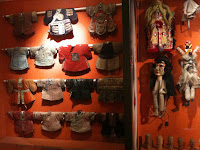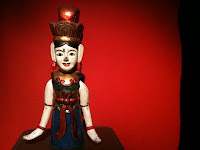 |
| Michael & Carolina |
Thanks to the hospitality of my brother and his wife, our four-day stay in Taipei was structured around meal time - morning, noon, night, and anytime in between when the fancy struck us. There seems to be an endless varieties of food available in Taipei, but to seek out and savor the very best, one needs to have a veritable cicerone to show the way. The followings are pictures of just a few samples of the delicious food we had in Taipei; a lot more was consumed but not recorded in the heat of action. We were told by a foodie friend of Michael's that Tainan, where my other brother lives and close to where I grew up, is the hottest place for the authentic Taiwanese cuisine. Kirk and I now have our next vacation destination in our sights.
 |
| Fish cheeks |
 |
| Pig intestines & lungs |
 |
| Northern style food from China |
 |
| Bitter tea |
Michael took us wandering around older parts of Taipei the day before we left. We practically started our eating odyssey from 7 o'clock in the morning till after dark, with a brief nap in the afternoon to recover before dinner. He had our route planned around food stops; we walked a little, a breakfast stop at the East Gate market, walked some more, a refreshment stop, then walked a bit more, a beef noodle stop, and so on, until we arrived at a tea shop where Kirk had a cup of bitter tea, which he claimed to be the best tea he has ever tasted but which was too bitter for me. It was made of a secret concoction of different herbs and dished out by the owner of the shop & the secret holder, who sat by himself behind an inner counter, guarding the silver urn from which it was dispensed. There was a plaque on the back wall citing twenty benefits of drinking bitter tea, one of which is lowering the body temperature, which Kirk confirmed to be true!



























































